The poem in the panel on the right was written as a commuter’s lament by Cornishman Bernard Moore, and paints a superb picture of the Looe branch of yesteryear.
Apart from the disappearance of Moorswater in favour of Coombe halt, and the fact that you won’t find a latch on a Southern commuter train these days, little has changed - and the Looe branch is a railway not to be missed on any West Country pilgrimage.
The journey begins at Liskeard, which boasts a unique station layout - the branch trains to Looe operate from a separate platform at right angles to the main line. The former sidings and yard area around this platform have been transformed into a large car park.
Liskeard station retains most of its original buildings, including at street level a Cornwall Railway booking office (to which a handsome modern buffet and circulating area has been added, replacing a GWR 1930s ‘utility’ extension). From there, a pathway leads down to the main line platforms, while it is necessary to head across the street and back downhill to the Looe branch station.
This platform, with its fine timber station including offices (unused) and waiting room, has been smartly re-finished in Corporate image-style red and grey, with chocolate and cream enamel signs. This WR image is repeated at all the stations down the line to Looe.
The Liskeard & Looe Railway was another West Country branch built to serve the mining industry. In this case it formed an end-on junction, at Moorswater near Liskeard, with the Liskeard & Caradon Railway, an industrial line which brought minerals down from the Caradon mines.
The minerals were transhipped at Moorswater and taken by the Liskeard & Looe Union Canal down to the harbour at Looe, for onward movement by ship. The Liskeard and Looe Railway replaced the canal, and throughout its length runs either on or close to the canal course.
This early railway was entirely separate from the rest of the growing railway network until the early years of the 20th century, when a connection to the Great Western was put in. As the L&LR was at right angles to, and 100ft below, the GWR, the connection starts by heading north, turning through 180 degrees to pass under the main line and then through a further 180 degreees, descending all the way, to link into the L&LR at Coombe Junction, just south of Moorswater.
Trains reverse at Coombe before heading down the East Looe river valley to the coast. The line also heads north from Coombe, a short distance, into a cement distribution centre at Moorswater.
Today’s Looe Valley Line train is usually a Class 153 railcar and on the occasion of my visit, FGW 153368 was on duty. A school party was on board, and the car was three-quarters full for the 1000 departure. The East Looe valley is heavily wooded and much of the journey down to Coombe is through a deep, green cutting. At Coombe halt, one of Britain’s 10 least-used stations, the driver changes ends and we set off, stopping almost immediately while he gets out with the single line token, unlocks the junction ground frame and reverses the points for the Looe direction.
Half a dozen orange-overalled contractors stand back while we pass, pausing in their work of spot replacement of sleepers. I muse that they probably outnumber the annual number of passengers from Coombe Halt. Later in the day, as I return by car, I realise that one of the reasons why the halt is so little used might be because it is impossible to find by road. I spend a while driving up and down narrow lanes, searching, and eventually find the trusty ‘arrow of indecision’ accompanied by a ‘Looe Valley Line’ sign.
However, it leads not to Coombe but to St Keyne for St Keyne Well. Here, right next to the station, is a much-advertised organ museum. There seems to be a West Country obsession with providing obscure museums for the delectation of tourists - in my few days of travels I’ve already noticed Barometer World, and the International Paper Weight Museum!
Causeland is also not particularly easy to find by road, but Sandplace is right beside the road into Looe. A little way further on is Terras crossing, which offers some good photographic opportunities as railway, road and river are all in close proximity.
The independent origin of the line is still apparent in the mileposts, for these give the distance from Looe (on the GWR all distances were measured from Paddington). Speed limits on the branch are seldom more than 25mph, and this allows time for enjoying the scenery, even if all the intermediate stations are passed without stopping. St Keyne Wishing Well, Causeland and Sandplace were all L&LR halts with small waiting shelters, like Coombe, but only the latter had the word ‘halt’ in its title.
Today, all these stations have the ‘standard’ FGW west country brick shelters with their three metal stanchions supporting a timber-valanced canopy. On this line, all are painted chocolate and cream.
At Sandplace the arch of the old canal bridge still stands. The line emerges onto the riverbank, where white heron-like birds (little egrets) are fishing in the shallow water, before a brief pause is made to observe the ‘stop and hoot’ regulations for the open level crossing at Terras. Arrival at Looe is at 1024.
The milepost at the station shows one quarter, for today’s Looe station is a quarter of a mile from the original end of track on Looe quay. The station really has been squeezed out to the edge of town, a new police station now occupying the site of the L&LR’s wooden terminus. It’s a five or ten-minute walk into town or down to the harbour. A car park near the station provides for the needs of local people wanting to use the train but the station itself offers no parking.
It does, however, have a small neat station building with a waiting room and a shop/tourist information centre. At the time of my visit the shop was open and staffed by a volunteer from the Devon & Cornwall Rail Partnership.
He’s outside, sweeping up cigarette ends and spilled sweets on the station forecourt, on his knees with a dustpan and brush!
The service pattern is approximately hourly, with the first departure from Liskeard at 0714 and the last at 1914. The 8¾ miles are allowed about 30 minutes. Considering the reversal, and the long, steep climb on up journeys, the timing is not unreasonable. I returned on the 1244 from Looe, a non-stop run - indeed, from St Keyne through to Coombe Junction the ‘153’ was clipping along quite smartly. There was a brief pause at the junction for the reversal, and we did not go forward into the halt platform.
Looe has enjoyed more than 40 years of single-car DMU service, first with ‘bubble cars’ and subsequently with ‘153s’. At the time of my visit the car was well filled on each journey but not overcrowded - there was even space for a bike on one trip.
The line reached its low point in the late 1960s, when the stations were demolished and replaced with bus shelters, while the Liskeard building was simply allowed to get very shabby. Since more enlightened views have prevailed, the branch has been given an identity, treated as an asset, and promoted accordingly. Traffic is inevitably seasonal, and while it does not have a ‘park and ride’ scheme, like the St Ives line, the large parking area at Liskeard clearly serves the same purpose.
The reprieve from Beeching’s closure proposal was all about access to a popular place in the days when car travel was beginning to cause problems in the narrow streets of West Country villages. There is no ‘main’ road into Looe. The town has done its best to provide car parking, though some of the car parks are nearly as far out of town as the railway station.
With the benefit of hindsight it might have been better to leave the single track of railway right in to town and build the car parks alongside it, but that’s no longer practical. As it is, the train is a vital supplementary means of access to Looe. As the single car unit delivers 60 or 70 passengers an hour, that’s the equivalent of a dozen motor coaches or at least 200 cars a day.
That’s a saving that has to be worthwhile.
Head further west, and on the Atlantic coast lies the tourist haven of Newquay. My parents loved their west country holidays. We seldom went anywhere else, so I got to know Newquay quite well. In the late 1950s it was Cornwall’s ‘top’ resort with up-market accommodation for family holidays.
I doubt whether anywhere in the west has changed quite as much in the past half-century as Newquay.
First there was surfing. Newquay’s Fistral Bay offers probably the best surf in the UK, but the whole of this stretch of Cornwall’s Atlantic coastline has attracted surfers for a long time. It used to be the tiny British boards, which would today be called ‘body boards’, but with The Beach Boys and the onslaught of all things Californian, the west coast of Cornwall became the UK’s answer to The West Coast, and Newquay became its capital.
Today, those surfers are tanned and bearded old men selling cheap T-shirts and dreaming of their glory days. An altogether much less attractive character has taken over this once up-market resort but I was blissfully unaware of the latest transformation as I set out round the convoluted traffic system of the St. Austell area, looking for Par station.
The Newquay branch is the longest of the surviving branch lines in Cornwall, a straggling nearly-21-miles crossing of the county from Par, on the south coast. In that distance the railway climbs from china clay country, through steep wooded valleys, out onto the ‘top’ of Bodmin Moor, and onto the wild, windswept granite coast, presenting the traveller with ever-changing scenery. As a child I had walked through the engine room of a Class 22 diesel-hydraulic at Newquay, and watched Warships coming and going over Trenance viaduct, above the municipal gardens of the same name. How will it have changed?
The 0912 Par-Newquay is formed of two Class 153s, reflecting its origins as a two-car Class 155. In the formation is 153369, my old friend from my trip on the Gunnislake branch (RAIL 625). I have my departure time as 0919 but I’ve failed to notice a subtle change in the timing that came into force the previous week. The Cornish main line is still semaphore signalled and Par boasts a particularly fine selection, albeit slightly incongruous when framing FGW’s distinctly 21st-century livery.
Departure from Par involves a flange-squealing negotiation of the curve round to the disused St Blazey station, where the platform survives as a crew-change facility for EWS drivers. A single rake of CDA china clay hoppers is all that’s in St Blazey yard. We cross a road and thread our way out past residential streets with a stream running at the side of the railway. Soon we’re crossing viaducts and climbing hard in low gear through the heavily wooded Luxulyan valley. The ‘153s’ horn disturbs a large bird and I get a remarkably close look at what I believe to be a buzzard.
The stop at Luxulyan yields one extra passenger - there are 20 to 30 already in the car in which I’m riding and a similar number in the rear car. Once into open country speed increases to about 40mph, and for a short stretch we’re on continuous welded rail. I notice, for the first time, that where the GWR would once have provided a fixed distant signal as a caution warning, there are now painted signs showing a horizontal distant arm on a square board.
As we slow for Goonbarrow Junction an unidentifiable Class 08 shunter is passed, still wearing BR blue. The signalbox here is a GWR standard red brick structure, fitted, like all the other Cornish ‘boxes I’ve seen, with modern double-glazed windows still having the GWR-style five-paned glazing bars. The most obvious change is the large handles (presumably a safety measure), enabling the windows to be opened from the outside. We stop momentarily for the token exchange. We now have the line, without so much as a passing loop, all the way to Newquay, to ourselves.
At last, a locomotive! 66091 is waiting to emerge from the china clay dries with a rake of CDAs for Carne Point on the freight-only Fowey branch.
The countryside is open farmland now, with a small hamlet here and there. Now we slow almost to a stop for Mollinis Crossing. There are flashing red lights here for road traffic, so although it is an open crossing, the train is only required to slow to 5mph rather than stopping. At Bugle we collect five more passengers, but one woman misses the train by moments because she enters a private yard rather than the gate onto the station.
Next stop is Roche, where two passengers alight but no one boards. We’re now keeping pace with traffic on the adjacent main road as we cross the moorland of gorse and windswept bushes. There’s a 20mph speed restriction for Tregoss Moor crossing, and another for a footpath before a permanent 15mph restriction as we squeal round a sharp right hand, and under the A39 at the wonderfully-named Indian Queens.
Now the railway is right out on the top of the moor and before long we’re coasting downhill at a lively pace. We pass St Columb Road without stopping but slow to 5mph for Halloon Crossing.
We canter past farms and holiday parks. My notebook says of this section: “If you like English countryside, this is a lovely ride!” It’s also a good drive, a winding railway with lots of restrictions but not with the overall slow speeds of the Gunnislake and Looe lines. There must be plenty for the driver to do. We slow to 10mph for Quintrell Downs crossing but don’t stop at the halt. Then it’s 5mph at Trencreek crossing, over Trenance viaduct, and into Newquay at 1003.
Newquay station, once a sprawling terminus with several platforms, has undergone relentless rationalisation over the years. Today there are only two long platforms and one of these is trackless. In the one remaining platform, the track stops well short of the former ‘concourse’, and arriving and departing passengers are segregated by barriers.
The platform area is typically FGW - clean, smart and new, with one of the distinctive little brick shelters. It’s just a pity that this major Cornish town is served by a station which looks like all their other minor halts, except for the long platform, which is the only clue to its origin. Behind the stop blocks is a rather run-down station cafe.
Once the train has left, the platform is closed off by a barrier, forcing waiting passengers to sit in the shabby cafe area and rendering the smart modern waiting shelter quite redundant. There are no FGW staff, but a rather scruffy young man is wearing a high-vis vest proclaiming ‘Station Friend’.
I ask why the platform is closed off. “Crowd control,” he says, going on to explain that there are sometimes 150 alighting passengers and that if someone falls off the platform, “they might sue British Rail”. “They’ll have a job,” I think, but decide not to comment. I wonder how they cope at St Ives, with more passengers, a smaller platform, and no barriers.
Our paths cross later when two girls ask for help getting to St Columb Road. He’s completely out of his depth, doesn’t seem to know that the train goes there, and I eventually have to explain the timetable to them. Already I’m less than impressed with Newquay, and worse is to come.
Leaving the station is an experience. The once substantial GWR terminus building has given way to a 1960s shopping block of the kind I can just imagine being extolled to local councillors by the property arm of BR at the time. No doubt ‘sold’ to local interests as a stylish new retail development which will be packed with excited shoppers before and after their train journey, the reality, 40 years on, is a dismal ‘parade’ of poor quality retail premises such as you’d find on a suburban council estate.
The main station access is a dingy, intimidating passageway squeezed down the side of Burger King, its steps covered in sick and cigarette butts. I don’t know whose responsibility it is - the local authority, I guess - but it’s a disgrace. I find myself looking out for discarded syringes, but happily I don’t see any.
Newquay, it seems, is a town which has lost its way. In the aftermath of the surfing craze it has sought a new money-spinner, and settled upon becoming the ‘party capital’ of the west. Amusement arcades, nightclubs and cheap drinks have brought the young uninhibited and driven away the traditional family holidaymakers. Even the main seafront hotel has a ground floor given over to a nightclub that would look well in Soho.
The town, I am led to believe, is now divided. Traditional family holiday facilities are going bust. Drunk teenagers are falling off cliffs. Now I understand the barrier arrangements at Newquay station, and the unsavoury ‘decorations’ in the entrance passageway.
So, the Newquay branch is all about the journey. A splendid journey it is, too! Just don’t expect too much when you arrive.

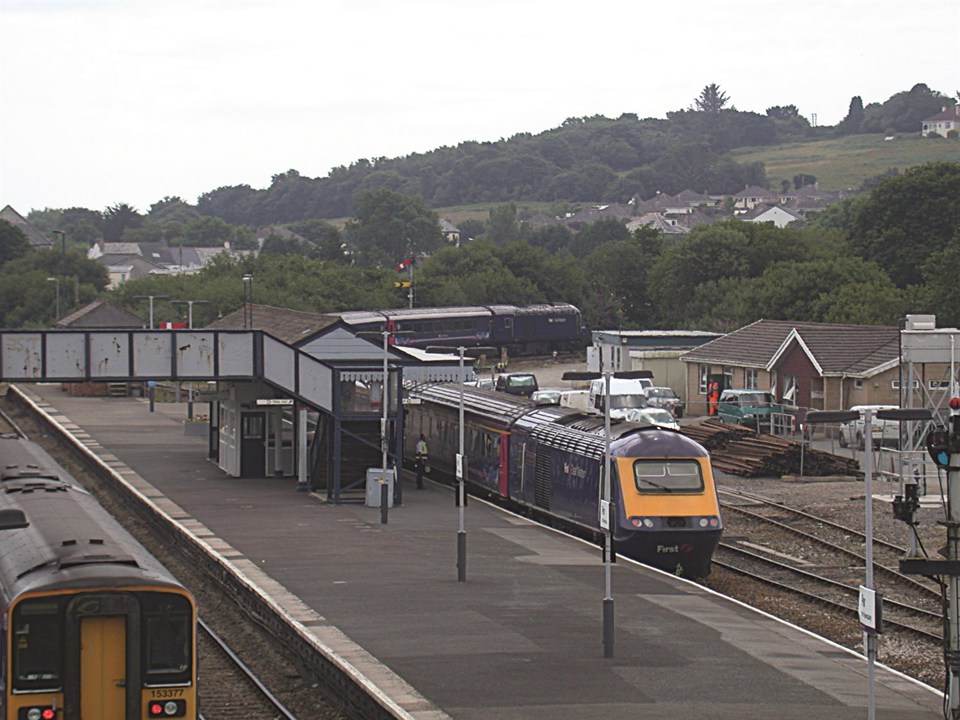
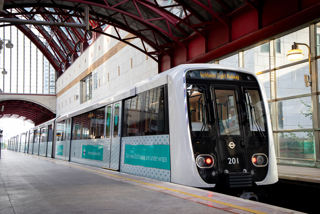
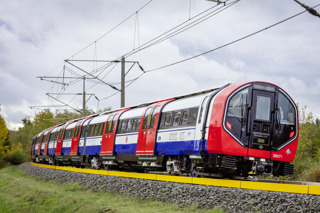

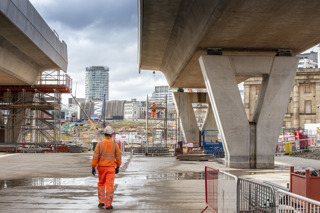
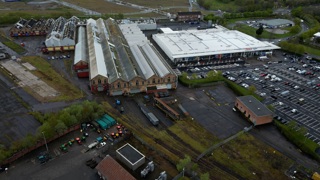











Gavin Moffat - 19/12/2020 18:02
As a Cornishman I avoid Newquay like the plague, it is a toilet.